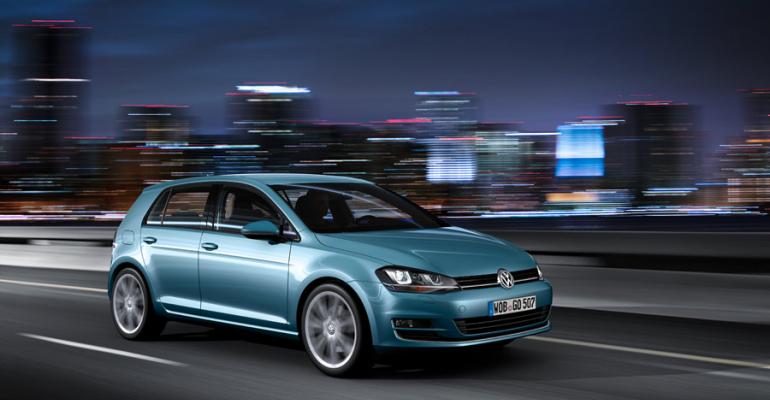LOS ANGELES – Expect more emotional design language from Volkswagen as it looks to win over more U.S. consumers and increase its worldwide sales tally, its chief designer says.
The German auto maker has not been shy about its goal to deliver 800,000 vehicles in the U.S. in 2018, but to do that it has had to tweak some of its European-styled cars to meet American tastes.
This meant refreshing the Jetta and Passat sedans with a “one-size-fits-all” approach, Klaus Bischoff tells auto writers in a roundtable discussion here.
“(VW) investigated what technologies, what production, what features, what the competition is offering, and we made a strategy of what we should offer and what should be better,” he says.
“Our engineers are really going deep into the functionality and the production processes to gain something for the customer. And if you look into the precision of our cars and the detailing, you can see this.”
It took the two restyled sedans to capture U.S. buyers’ attention, and similar changes have been migrating to other VW products. The Beetle, long criticized for its too-round styling, already has received a more aggressive makeover, and the next-generation Golf and GTI compact cars also will reflect the auto maker’s new design language, Bischoff says.
However, the designer is most looking forward to VW’s future hybrid products, which he says will buck the traditional bland designs seen on today’s electrified vehicles.
“We’ll be very elegant,” Bischoff says, not revealing too much about VW’s hybrid and EV design strategy. “We will implement a line signature based on our product range. We strongly believe that the customer who pays a lot for that type of technology wants to show that he’s spent his money on this (type of vehicle).”
Volkswagen will “come out with a lot of hybrid technology that will be state-of-the-art from the get-go,” he says. At least one plug-in hybrid will make its European debut in 2014 before arriving in North America, and there also will be two all-electric vehicles in Europe.
The auto maker plans to introduce a fullsize cross/utility vehicle to slot above its Touareg CUV, but remains undecided about whether to continue marketing its Routan minivan. Built by Chrysler, Bischoff calls the dissolution of the Routan agreement between the two auto makers “a bad divorce,” but he is optimistic about the new CUV.
“At the moment, we are more focused on the (CUVs),” Bischoff says. “We’re seeing the segment growing rapidly, and we see the (multipurpose vehicle) segment dropping rapidly. Maybe we are wrong, but the strategy is to go to the (CUV) side.”
He also insists the one-size-fits-all design strategy for the U.S. won’t be adopted by other brands in the VW group, such as Audi or Porsche.
“Audi is not doing this,” says Bischoff. “They are successful with their strategy, but this is a premium product. We wanted to be more accessible, so we wanted to come closer to the sweet spot in the market. If you want to be successful in the States, you have to have a certain amount of market share.”
“Our cars will get more and more emotional,” he adds. “They’ll look more sporty, more dynamic, a little more aggressive, but (keep) the European heritage. To be understood around the world is a value you can read in our book.”





